Close UP
Multicultural Exchange with Everyone in Koto (Minna de Tabunka Koryu in Koto) ~Japanese and foreign residents are working together to create a community where mutual understanding and mutual aid are generated.~
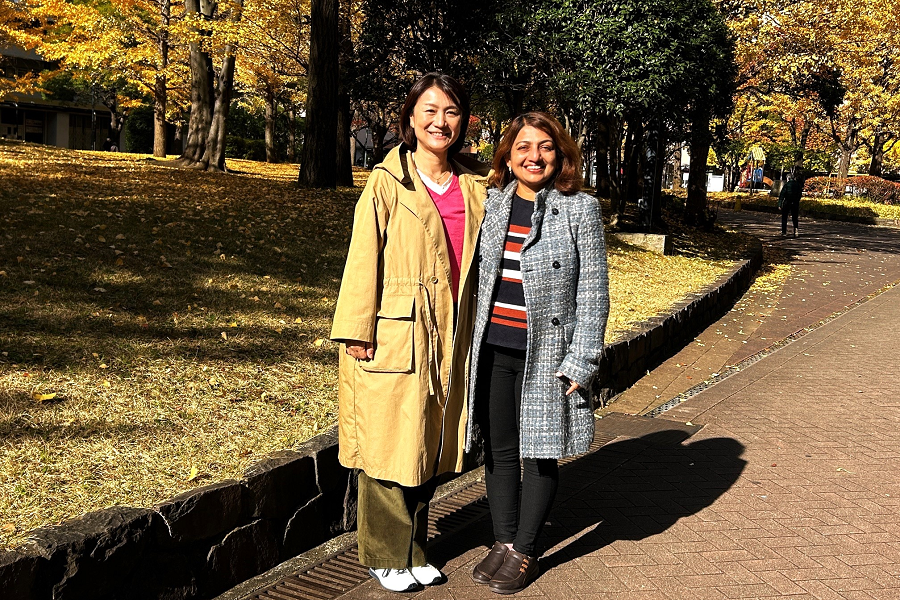
"Multicultural Exchange with Everyone in Koto" is an organization active in the Ojima area of Koto City, Tokyo, where members of diverse nationalities of all ages enjoy exchanging cultural activities and work together to build their community.
In Ojima, Koto City, the proportion of elderly Japanese residents and young foreign residents has been increasing among those living in apartment complexes and other areas, in recent years.
Under these circumstances, the Multicultural Exchange with Everyone in Koto was initiated by elderly Japanese residents who wanted to increase contact between themselves and young foreign residents.
We spoke with Ms. Tripathy Lopamudra (Leepa-san) and Ms. Reiko Nakano, who are in charge of planning and conducting “Cultural Exchange,” one of the pillars of their activities.
Building a Community with Diverse Members Working Together

With several international schools located in Koto City (and neighboring wards) it is home to the fourth largest number of foreign residents in Tokyo (as of October 2024). Because of the presence of an Indian international school in the district, there is a large number of people of Indian origin living in the area; they represent Koto City's third largest group of foreign residents after the Chinese and Koreans.
Many young foreign families from India, China, Nepal, Vietnam, and other countries live in the Ojima 6-chome housing complex and the surrounding area. On the other hand, the Japanese who have lived in the area for a long time have been aging. As the nationalities, generations, and lifestyles of the residents became more diverse, the community was faced with the challenge of how to create a safe and enjoyable community for all residents to live in.
Therefore, the president of a federation of Ojima neighborhood associations, chiefs of each neighborhood association, and volunteers from the community, got together and began discussions. One year later, in the autumn of 2021, "Multicultural Exchange with Everyone in Koto" activities were initiated to increase mutual contacts.
During the organization's activities, foreign residents and Japanese residents communicate with each other sharing their culture and customs. Multicultural Exchange with Everyone in Koto aims to create a community in which both foreign residents and Japanese residents can help and care for each other through these activities.。
Currently, the organization has members of various nationalities, including Japanese, Indian, Vietnamese, and Peruvian, living in and outside the Ojima area, ranging in age from middle school students to those in their 80s. Members of the organization come from diverse backgrounds, including local residents involved in community association activities. They include people engaged in international exchange activities and researchers specializing in various fields such as multiculturalism and Japanese language education.
"Our strength is that we have several key people in our organization, including a vice president of the neighborhood association and a president of the social welfare council. They all entangle various people in the activities using their areas of specialty," says Ms. Nakano.
Listening to Others First Especially in a Place Where Diverse People Gather
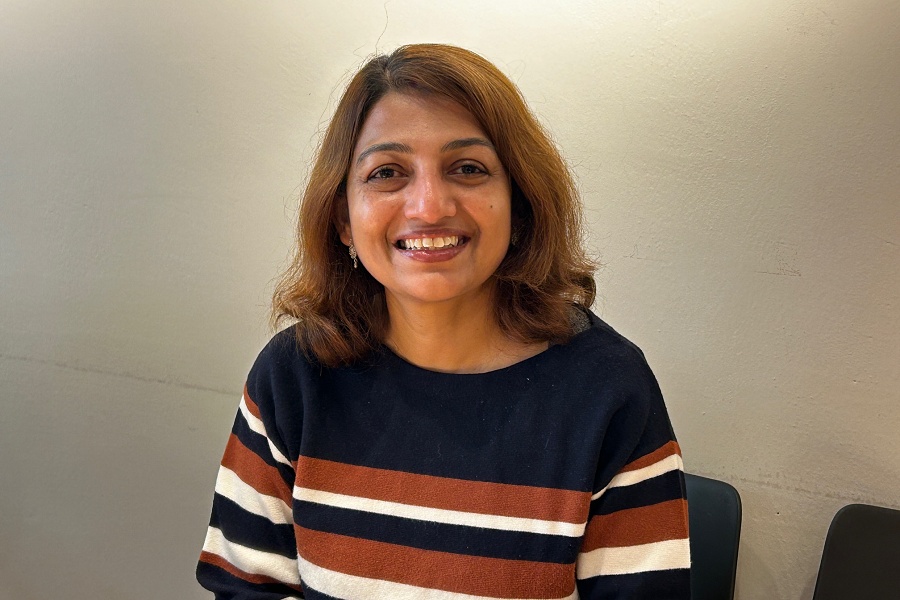
The organization says that they value doing things with all their members. Foreigners also proactively participate in planning meetings and activities, not as "guests" but as "members".
The name "Multicultural Exchange with Everyone in Koto" has a unique twist, as members of this organization come from a wide range of ages and nationalities.
At first, they tried to give it a name that referred to their activities, such as "tabunka-koryu (multicultural exchange) or kokusai-koryu (international exchange). Then, Leep-san's son suggested that it would be better to add words such as "global" or "friendship" to the name of the organization, since foreigners would not understand the Japanese. One elderly Japanese said, "Even though it is written in katakana, I feel it is difficult because it is English". A member who is a Japanese language support volunteer for foreigners suggested that the name of the organization include hiragana characters that are easy for foreigners to understand and that the word "minna de (everyone)" be included to convey the idea that everyone can participate.
"It is a simple name, but we like it very much because it is something we all came up with together. Through this discussion, we were able to deepen understanding among the members," said Ms. Nakano and Leepa-san.
In a place where a diverse group of people discuss issues, Leepa-san says it is important to listen to others first.
"When I hear an idea (from others), I don't deny it from the beginning, but listen to it first. I enjoy and find it interesting that everyone talks about different things, including things that are different from my own ideas."
"There are differences in culture and ways of thinking, but we don't see that as a problem. We also enjoy chaos. It seems to me that we have finally developed some kind of common values over time and through repeated discussions," says Ms. Nakano as well.
Knowing Each Other by Exchanging Cultures
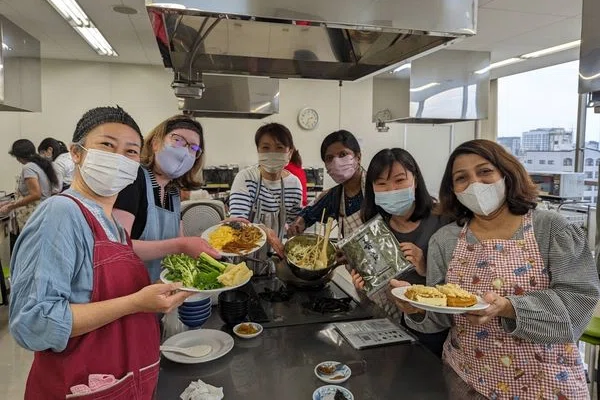
Photo Courtesy: Multicultural Exchange with Everyone in Koto
Multicultural Exchange with Everyone in Koto's first activity as an organization was "Language Exchange". "Language Exchange" is an activity that aims to bring together Japanese residents who have learned English at school but have no opportunity to use it, and foreign residents who have not had the opportunity to speak the Japanese they have learned in their daily lives in the foreign community.
As they continued their activities, Leepa-san and Ms. Nakano thought it would be more interesting if participants could share their experiences. They have developed "Language Exchange" into a "Cultural Exchange" where participants can enjoy the exchange of culture as well as language. The organization plans and conducts events that provide opportunities for foreigners and Japanese to enjoy cooking, walking around town, and other activities together, using both Japanese and English.
The first event they planned was "Miso Soup Cooking". There was a great response, not only from foreigners but also from Japanese people, because the taste of miso soup differs from each household to household. The members learned that many Indians are vegetarians and do not eat miso soup made from dried sardines or bonito stock (dashi). All participants checked the labels on the ingredients and realized that it is hard to be a vegetarian, so the organization then held a "Vegetarian Japanese Cooking" event. Many of the Japanese participants learned for the first time that many of the ingredients they normally use in their cooking contain meat, seafood, and other animal products, which vegetarians do not eat. "The question, 'Is a little bit OK?' was repeatedly said (by participants). But it's not a matter of quantity. By working together, we learn and realize things for the first time every time," says Ms. Nakano.
Sharing experiences spontaneously leads to communication.
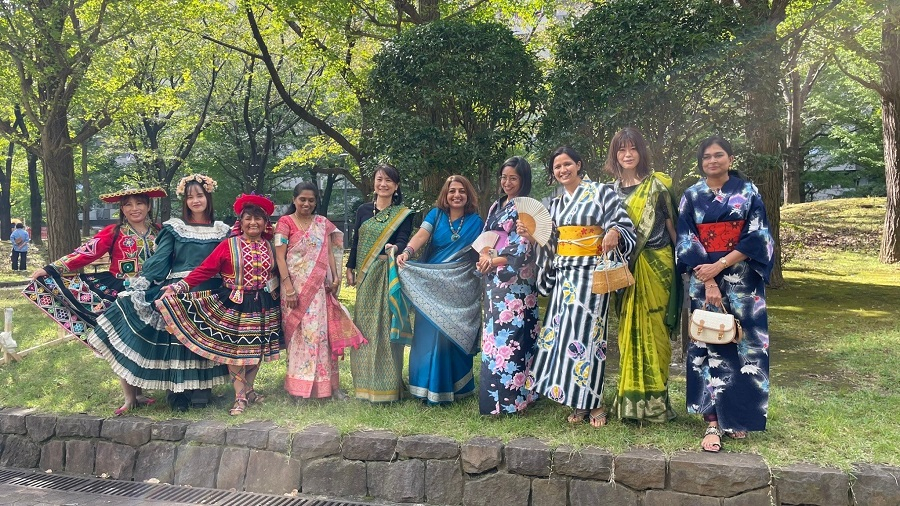
Photo Courtesy: Multicultural Exchange with Everyone in Koto
The group participates in the Oshima 6-chome Apartment Complex Fall Festival every year and holds a "Try on Traditional Costumes" event. When Leepa-san organized an event in which participants wore Indian sarees, and Japanese yukatas, other members agreed, and a diverse array of national costumes such as Vietnamese ao dais and Peruvian dresses were gathered.
Volunteers from various countries participate in helping to wear clothes, and it is said that connections are being made among foreign participants.
"Everyone enjoys wearing beautiful costumes from different countries. Traditional costumes can be worn by people of all sizes and ages. Some Japanese people over 70 years old, who had been reluctant to participate in our activities in the past because of their limited English ability, have now come to volunteer to help us dress people in yukatas. They are scared to use English, but they want to participate in interesting events," says Leepa-san.
People of Indian descent have the custom of spending weekends with their entire families. Ms. Nakano says, "Next time, we would like to prepare men's costumes as well, and set up a photo booth where whole families can take pictures together."
Leepa-san, who has organized a variety of events, says that in planning an event, she places importance on "making it interesting for both Japanese and non-Japanese people".
Communication occurs naturally through the use of language, as participants share experiences together, rather than one or the other teaching something to the other.
Each individual does what he or she can do for the community as one of its members.
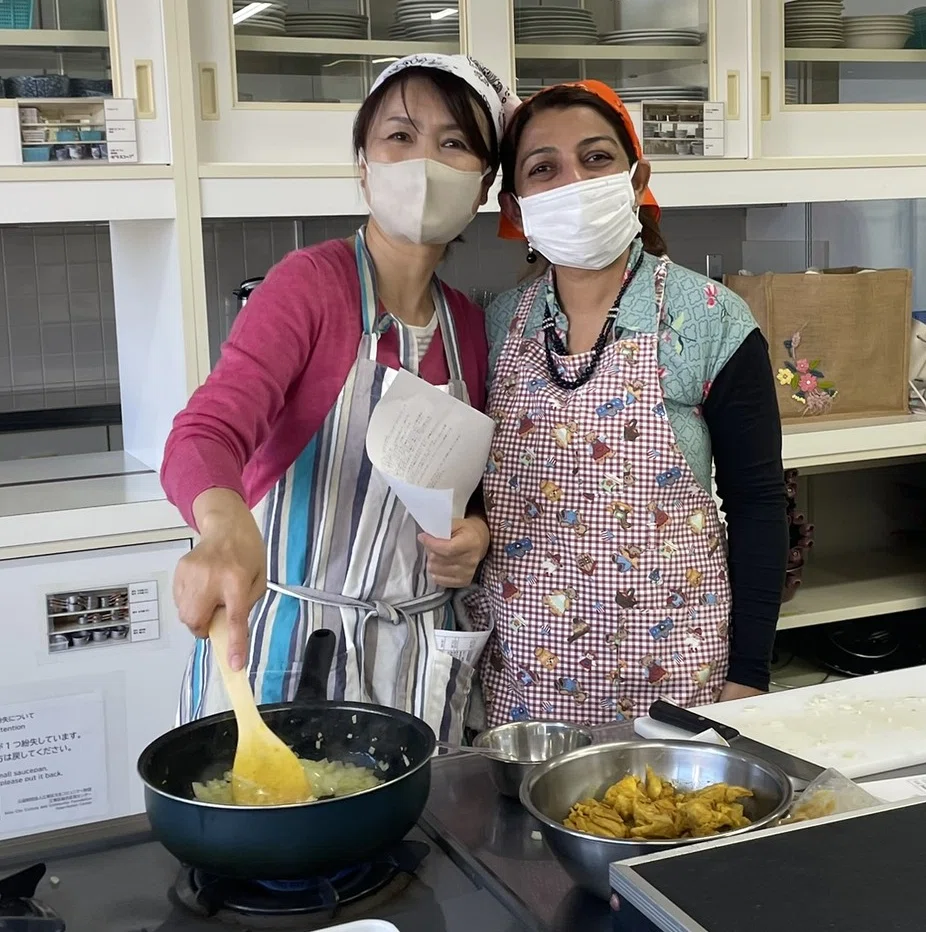
Photo Courtesy: Multicultural Exchange with Everyone in Koto
The next major event the group is planning is the "Soup Kitchen for Multicultural coexistence (tentative title)” in March. They are planning to hold a "soup kitchen where everyone can enjoy a meal” at the Koto Ward General Civic Center.
The members, who have become aware of the difficulties faced by vegetarians through their past activities, heard stories of foreigners who came to a soup kitchen after the Great East Japan Earthquake but had to leave because they could not find food they could eat. The members determined, "Let's be a community with a soup kitchen where everyone can eat!"
In the planning stages, Leepa-san said, "In a soup kitchen, the young people cook the meals, right? We (foreigners) sometimes cook meals for people in the community, don't we?"
If a disaster occurs during the daytime on weekdays, when people are at work, there is a possibility that foreigners and the elderly may be the only people in this area. The organization decided to make curry, which foreigners are accustomed to making, with Japanese ingredients that are available even in times of disaster; and with a "gentle" flavor that everyone can enjoy, so that young foreign residents can take the lead in preparing meals at the soup kitchen.
"We're planning to make a tofu curry that everyone can enjoy; vegetarians, the elderly, and children," says Leepa-san.
Through these activities, a sense of responsibility as members of the local community is fostered among foreign residents.
"Multicultural Exchange with Everyone in Koto" involves many people in a variety of projects, and Ms. Nakano and Leepa-san talk about the future prospects for the program as follows.
"When I was raising my child, I had a lot of help from people in the community, so now I would like to help the community. There are many foreigners living in this area, but many of them live within the foreign community and do not have much contact with Japanese people. I would like to organize many activities where people can get information necessary for living in Japan, and I hope that more and more foreigners participate in these activities," says Leepa-san.
"Many of the people who participate in our activities have originally been interested in multicultural exchange and other activities. Although there are many foreigners living in Koto City, many people think that there are no foreigners around them. By expanding our connections, we hope to think about multicultural coexistence together," says Ms. Nakano.
The organization aims to help create a community where mutual aid is born along with multicultural coexistence. Residents are getting to know each other and expanding their circle of connections through interaction.
*This article is based on information available at the time of the interview. For the latest information, please contact the organization directly.
